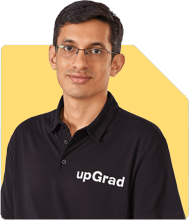Hi I am 32 . I am earning 1.10 L Per month. I have personal loan of 3.5 L out of which 2 L is paid as of now(12k per month). Have 4.5 k per month for term insurance, have 25k as lumpsum in less, have 2.5k per month for index fund.
No kids as of now and planning for it. How to plan my investment for the future to have better retirement and have good returns from the age of 45
Ans: At age 32, you are already doing many things right.
You are earning well. You are paying your loan regularly.
You have term insurance. You are saving and investing.
That shows clarity and responsibility.
With better planning, you can achieve early financial freedom.
Let us go step by step and explore a full 360-degree plan.
? Focus on Closing Personal Loan Early
– Personal loan interest is very high.
– Even 12% interest eats your returns.
– Try to pay off the remaining Rs.1.5 lakh soon.
– Use your annual bonus or extra income to close it.
– Once loan is over, you free up Rs.12,000 every month.
– This amount can be used for long-term wealth building.
? Avoid Investing in Index Funds Going Forward
– Index funds just copy the market, they do not beat it.
– They have no active fund manager to protect you in a crash.
– Market corrections will hurt you more in index funds.
– Index funds suit foreign markets, not Indian retail investors.
– You need better risk-adjusted performance.
– Actively managed funds do better in a growing market like India.
? Stop Future SIPs in Index Funds
– Redeem the index fund once you see profit.
– If gains are more than Rs.1.25 lakh, 12.5% LTCG applies.
– For short term, 20% STCG applies.
– After exit, switch to actively managed regular mutual fund.
– This will give you better control and higher growth.
? Always Invest Through Certified Financial Planner’s MFD Channel
– Direct plans save commission, but lose expert guidance.
– You end up doing guesswork alone.
– You may miss rebalancing, tax planning, or asset shift.
– Regular plans via CFPs give full-service support.
– You get annual review, performance check, goal mapping.
– This helps in both return and peace of mind.
? Build Emergency Fund First Before More Investments
– You need 4–6 months of expenses in liquid mutual fund.
– It must be easy to access during job loss or emergency.
– You are planning to start a family. So expenses may rise.
– Emergency fund will protect your SIPs during tough times.
– Without this fund, you may stop SIPs midway.
? Shift the Rs.25,000 Lumpsum in Savings Account
– Savings account returns are very low.
– Keep only Rs.10,000 in savings for routine expenses.
– Rest Rs.15,000 can be shifted to liquid fund.
– From there, do weekly STP to equity mutual funds.
– This builds better returns with low risk.
? Start Long-Term SIP for Retirement from Now
– Retirement is 28 years away if you plan till 60.
– But since you want returns from age 45, we plan till then.
– That’s only 13 years left. So time is limited.
– Start SIP in equity mutual fund now with Rs.5,000–7,000 monthly.
– Use actively managed flexicap or multi-cap funds.
– Over 13 years, this SIP can build huge corpus.
? After Loan Closure, Increase SIP Aggressively
– You will save Rs.12,000 every month after loan is over.
– Use this full amount for long-term SIP.
– That means total SIP becomes Rs.17,000 or more monthly.
– This is the most powerful wealth creation method.
– Early SIP gives strong compounding.
? Invest Separately for Child-Related Goals
– You are planning for a child soon.
– Child education will need funds from age 3 onwards.
– Start a separate SIP of Rs.2,000–3,000 monthly.
– Use balanced advantage fund or hybrid fund.
– This gives safety with growth.
– Increase it over time as income grows.
? Don’t Mix Insurance with Investment
– Only term insurance is needed.
– No need for ULIP, endowment, or LIC saving plans.
– They give poor returns and lock-in.
– If you already have them, surrender and shift to mutual funds.
– Keep insurance and investment separate always.
? Review and Rebalance Your Portfolio Yearly
– Funds don’t perform equally every year.
– Your goals and life also change yearly.
– Rebalancing helps you stay aligned with your targets.
– Your Certified Financial Planner will review and guide every year.
– This improves long-term performance and reduces risk.
? Increase SIP by 10% Each Year
– As salary grows, increase SIP also.
– If your SIP stays flat, your goals may fall short.
– Use bonus, hike, or incentives to boost SIP yearly.
– This keeps your investments ahead of inflation.
? Avoid Real Estate for Wealth Creation
– Real estate is illiquid and expensive.
– No proper return tracking.
– Maintenance costs, taxes, and delay in selling are major issues.
– Mutual funds offer better transparency, growth, and liquidity.
? Consider Health Insurance for Family
– Don’t depend only on company insurance.
– Buy a family floater health plan outside.
– As your family grows, this becomes more useful.
– It also protects your investments from medical emergencies.
? Don’t Chase Fancy or Trendy Funds
– Sectoral or theme-based funds are risky.
– They give returns in short bursts, then fall sharply.
– For wealth creation, use diversified funds only.
– Avoid NFOs or fund offers without strong history.
? Use SIP in Growth Option Only
– Don’t choose IDCW (dividend) options.
– Dividends are now taxed as per your slab.
– Growth option helps full compounding.
– This is the best way to build retirement corpus.
? Tax Planning Must Be Done Smartly
– ELSS funds are useful for tax saving.
– They also give better returns than PPF or LIC.
– Invest only in one or two ELSS funds.
– Don’t mix ELSS with long-term SIP. Keep them separate.
? Avoid Investing in Gold for Retirement
– Gold is not a wealth builder.
– It is a hedge, not a growth tool.
– Keep gold only for consumption, not retirement.
– Equity mutual funds will beat gold over long term.
? After Age 40, Start Shifting to Low-Risk Funds
– From age 45, you need returns regularly.
– Shift 25% of your portfolio to hybrid or balanced fund.
– In next few years, increase the portion step by step.
– This reduces risk when nearing your usage age.
? Don’t Touch Retirement Corpus for Any Other Goal
– Keep this investment separate and untouched.
– Use separate SIPs for short goals like car or travel.
– Mixing goals creates confusion and shortage later.
– Treat retirement as non-negotiable.
? Create a Written Financial Plan With Goals and Review Points
– Put your income, expenses, loan, SIPs, and goals in one place.
– This gives clarity and commitment.
– Update it every year with a Certified Financial Planner.
– Without a plan, your investment gets directionless.
? Don’t Compare Your Returns With Others
– Every investor has different goals and risk level.
– Focus on your own path.
– Returns depend on time, discipline, and asset mix.
– Comparing only brings doubt and poor decisions.
? Don’t Delay. Start Today
– The earlier you start, the stronger the growth.
– Each year’s delay reduces the final amount heavily.
– No need to wait for market low.
– Start SIP with what you have now. Increase later.
? Finally
– You are on a very good path at age 32.
– Clear off the personal loan soon.
– Stop index funds and shift to regular, actively managed funds.
– Don’t go for direct plans. Use Certified Financial Planner-guided channel.
– Build emergency fund. Start goal-based SIPs.
– Increase SIP every year. Review yearly.
– Plan for child, insurance, and retirement separately.
– Avoid distractions like real estate, gold, or fancy funds.
– Build wealth with clarity, patience, and guidance.
Best Regards,
K. Ramalingam, MBA, CFP,
Chief Financial Planner,
www.holisticinvestment.in
https://www.youtube.com/@HolisticInvestment





















